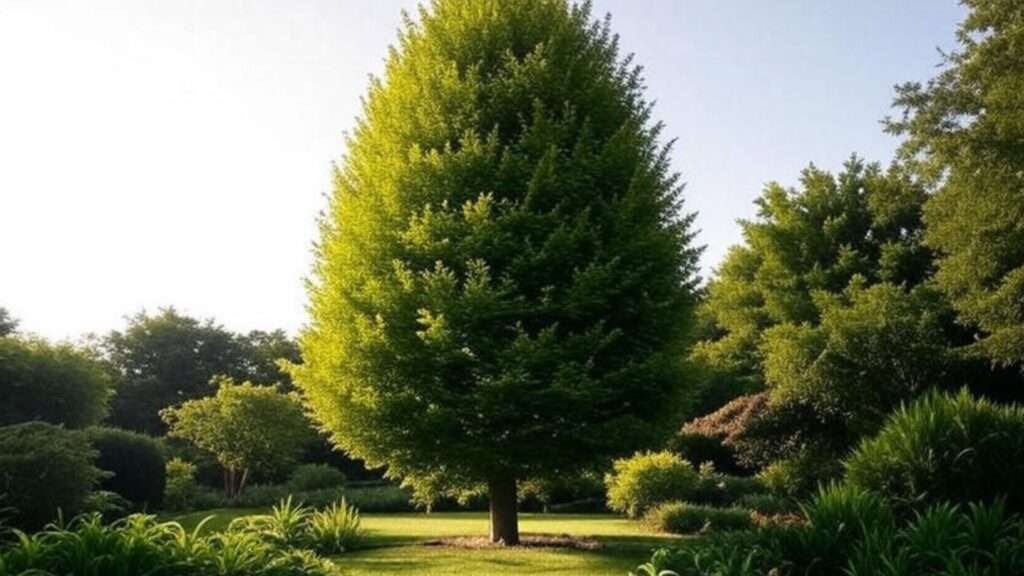
Columnar Beech Tree: A Complete Guide to Planting, Growing, and Caring for This Elegant Tree
Looking for an elegant, space-saving tree that adds beauty and structure to your garden? 
In this complete guide, we’ll explore everything you need to know about planting, growing, and caring for a columnar beech tree. Whether you’re a beginner or experienced gardener, we’ll provide you with practical tips to ensure your tree thrives and becomes a long-lasting feature in your landscape. Keep reading to discover how to successfully grow this majestic tree!
Table of Contents
ToggleWhat is a Columnar Beech Tree? 
The Columnar Beech Tree (Fagus sylvatica ‘Dawyck’) is a narrow, upright variety of the European beech, known for its elegant, column-like shape. Unlike the typical spreading beech trees, the columnar beech grows in a more compact, vertical form, making it perfect for tight spaces like narrow gardens, urban landscapes, and along driveways.
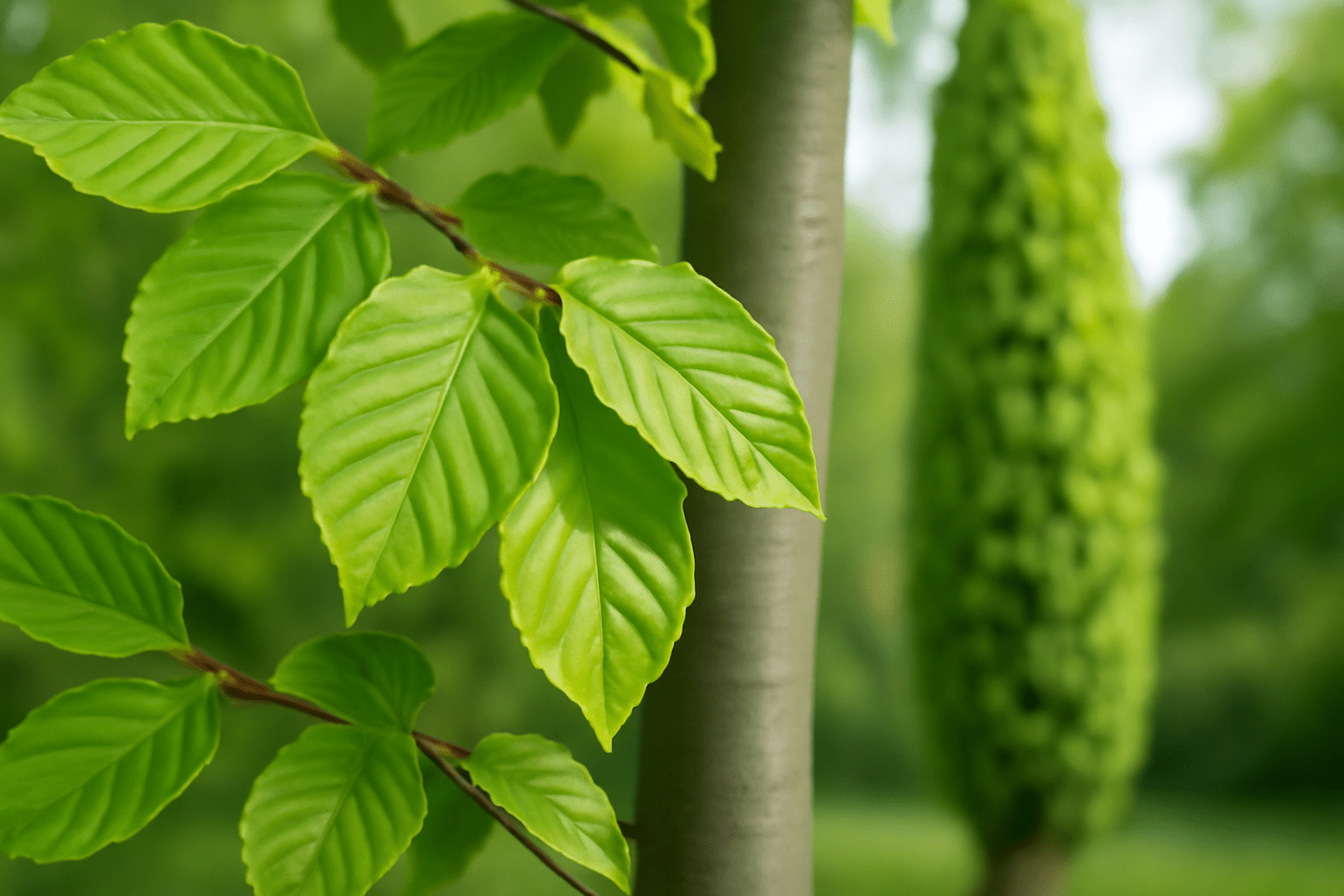
This tree stands out for its sleek silhouette, which offers year-round beauty. In spring, its bright green foliage emerges, while in the fall, the leaves turn to stunning shades of gold and copper. The columnar beech tree can reach a height of about 40 to 50 feet, but its narrow form ensures it doesn’t take up too much space horizontally.
Its bark is smooth and grayish, which adds to its elegant appearance, and during the colder months, its winter silhouette can provide a striking contrast against the landscape.
Perfect for gardeners looking for a tree with both beauty and function, the Columnar Beech Tree is an ideal addition to any landscape. Whether you’re looking for a striking accent or a tree that thrives in smaller spaces, this variety offers great versatility and charm!
Best Growing Conditions for Your Columnar Beech Tree 
The Columnar Beech Tree (Fagus sylvatica ‘Dawyck’) is a stunning and elegant tree that thrives in the right conditions. To ensure it grows healthy and strong, it’s essential to understand its ideal growing environment. Here’s what you need to know to help your tree reach its full potential!
1. Soil Requirements 
The Columnar Beech prefers well-draining, slightly acidic soil. It thrives in soils with a pH range of 5.5 to 6.5. Avoid soils that are too alkaline or waterlogged, as they can harm the tree’s roots. If your soil is heavy clay, consider mixing in some compost to improve drainage.
2. Sunlight Exposure 
This tree loves full to partial sunlight. Aim for at least 4–6 hours of direct sunlight per day. However, it can tolerate some shade, especially in the afternoon, making it perfect for planting in areas with filtered light. Just remember, too much shade can result in slower growth.

3. Temperature and Climate 
The Columnar Beech is cold-hardy, making it a great choice for cooler climates. It thrives in USDA Hardiness Zones 4 to 7. If you live in an area with hot summers, make sure your tree is planted in a location that provides some afternoon shade to protect it from extreme heat.
4. Watering Needs 
While this tree doesn’t like soggy roots, it does prefer consistent moisture. Water your Columnar Beech regularly, especially during dry periods. The soil should be kept moist but not waterlogged. Mulching around the base can help retain moisture and keep the roots cool during summer.
5. Spacing and Airflow 
Columnar Beeches are narrow and upright, but they still need space to grow. Plant them at least 3-4 feet apart from other trees or structures. Good airflow is essential for preventing disease and promoting healthy growth, so avoid overcrowding.
6. Fertilizing 
Feed your Columnar Beech in early spring with a slow-release, balanced fertilizer. Over-fertilizing can harm the tree, so use it sparingly. Organic mulch, such as shredded leaves or compost, can also provide natural nutrients to help the tree thrive.
By giving your Columnar Beech the right soil, sunlight, temperature, and watering conditions, you’re setting it up for long-term success. With a little care and attention, this beautiful tree will reward you with elegant, column-like growth and stunning foliage year after year!
Planting Your Columnar Beech Tree 
Planting a columnar beech tree is a rewarding process that can bring elegance and beauty to any garden or landscape. Here’s a simple, step-by-step guide to help you plant your tree and ensure it thrives for years to come:
1. Choose the Right Location 
Columnar beech trees love well-drained, slightly acidic soil. They thrive in full sun or partial shade, so pick a spot that gets at least 4-6 hours of sunlight a day. Ensure the area has enough space for the tree to grow, as it will reach up to 30 feet tall, but stays narrow, around 8-10 feet wide. Avoid areas with strong winds or poor soil drainage.
2. Prepare the Soil 
Before planting, prepare the soil by loosening it with a shovel or garden fork. Mix in compost or organic matter to improve soil fertility and drainage. If your soil is heavy clay, adding sand or perlite can help with drainage. The goal is to create a well-aerated environment for the roots to spread out comfortably.
3. Dig the Hole 
Dig a hole that’s at least twice as wide as the root ball of your tree but only as deep as the root ball itself. This gives the roots plenty of room to spread out while keeping the root collar (the base of the trunk) level with the surrounding soil.
4. Plant the Tree 
Carefully remove the tree from its pot or packaging. Gently loosen the roots if they’re crowded or circling the bottom of the pot. Place the tree in the hole, ensuring the root collar is even with the ground level. Backfill the hole with the soil you’ve prepared, pressing gently to eliminate air pockets. Avoid piling soil around the trunk, as this can cause rot.
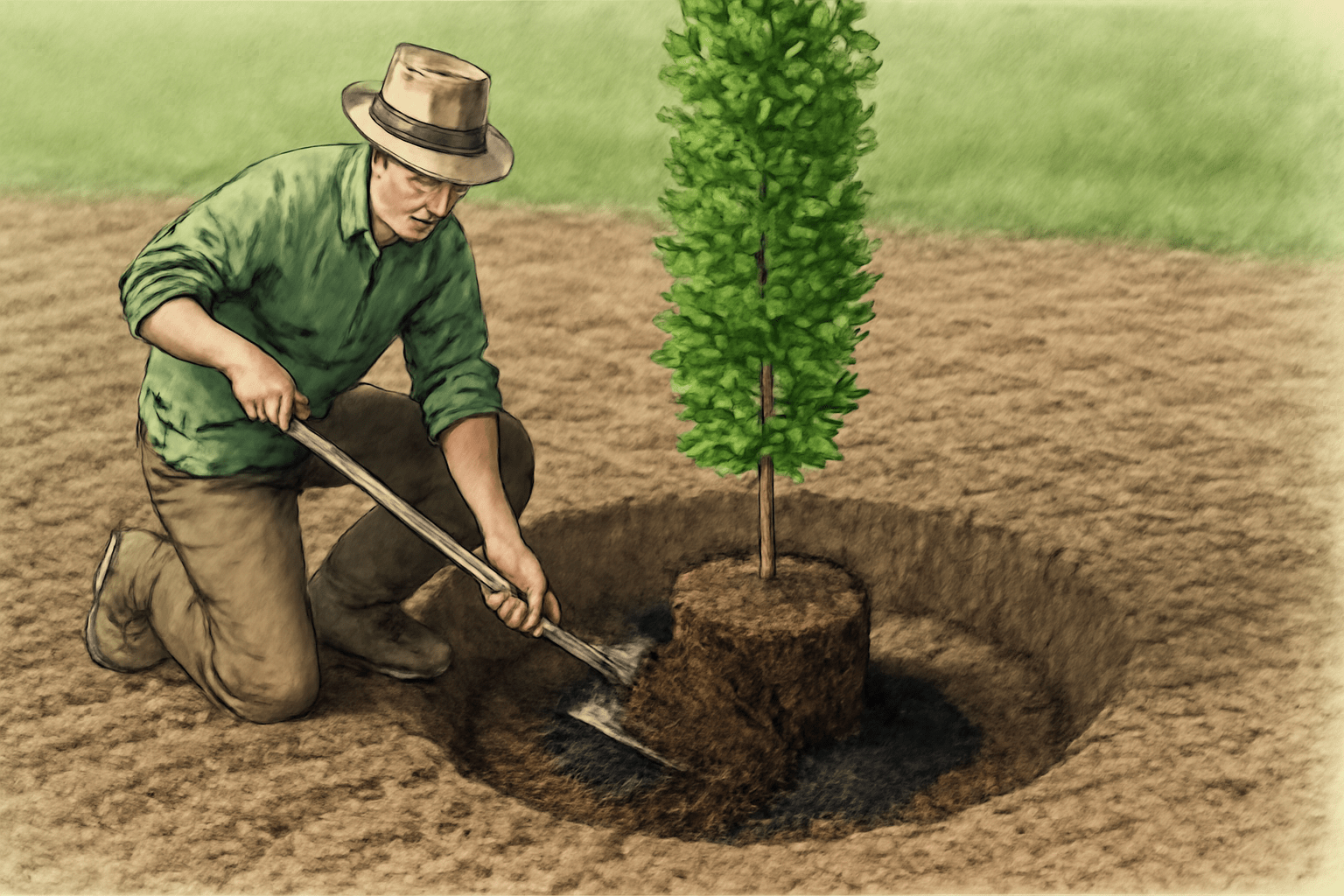
5. Water Well 
After planting, give your columnar beech tree a deep watering. This helps settle the soil around the roots and ensures they get the moisture they need. Keep the soil consistently moist for the first few weeks until the tree becomes established.
6. Mulch for Moisture Retention 
Spread a 2-3 inch layer of mulch around the base of the tree, but not directly against the trunk. Mulch helps retain moisture, suppress weeds, and regulate soil temperature. Choose organic mulch like bark or wood chips for the best results.
By following these simple steps, your columnar beech tree will have the best start possible. It’s an easy process that yields long-term benefits—watching your tree grow and thrive will be a rewarding experience for years to come!
Pruning and Shaping Your Columnar Beech Tree 

Pruning your columnar beech tree is essential to maintain its neat, upright shape while promoting healthy growth. Whether you’re a beginner or an experienced gardener, here are some simple, effective tips to ensure your tree thrives while looking its best!
1. When to Prune 
The best time to prune your columnar beech tree is during the late winter or early spring when the tree is dormant. This minimizes stress on the tree and helps prevent disease. Avoid pruning in the fall or summer, as this can encourage unwanted growth or disease.
2. What to Prune 
Focus on removing any dead, damaged, or diseased branches first. These branches can weaken the tree and make it more susceptible to pests and illness. Afterward, you can shape the tree by cutting back overgrown areas to maintain its tidy, column-like structure. Avoid cutting too much at once, as this could shock the tree.

3. How to Prune for Shape 
To enhance the tree’s natural shape, gently remove any branches that extend too far out or disrupt the upright form. Be sure to cut just above a bud or side branch to encourage new growth in the right direction. This is especially important for columnar trees, as you want them to grow tall and narrow, rather than spreading out.
4. Tools You’ll Need 
- Pruning shears: Ideal for small branches.
- Loppers: For slightly thicker branches.
- Pruning saw: For larger, thicker branches.
Ensure your tools are sharp and clean to avoid injuring the tree or spreading disease.
5. Tips for Long-Term Health 
Regular pruning helps keep your columnar beech tree healthy by improving airflow and sunlight penetration, which reduces the risk of pests and diseases. Additionally, pruning promotes strong, compact growth, making your tree even more resilient in the long run.
By following these simple steps, you’ll have a beautiful, well-maintained columnar beech tree that enhances your landscape year-round. Happy pruning!
This section not only provides practical steps for pruning but also emphasizes the importance of regular care to maintain the tree’s structure and health. With clear, actionable insights, readers can confidently take care of their columnar beech trees!
Caring for Your Columnar Beech Tree 
The columnar beech tree is a stunning addition to any landscape, thanks to its elegant, narrow shape and lush green foliage. But like any plant, it needs proper care to thrive. Here’s how to keep your tree healthy and growing strong for years to come!
1. Watering 
Columnar beech trees prefer consistently moist soil, but they don’t like being waterlogged. During the growing season, water your tree deeply once a week, especially if rainfall is scarce. Make sure the soil stays moist but well-drained. Reduce watering in winter when the tree is dormant.

2. Sunlight 
These trees thrive in full sun to partial shade. They need at least four hours of direct sunlight daily to grow well. If you’re planting more than one, space them out to ensure they each get enough light and air circulation.
3. Soil Requirements 
Columnar beeches prefer slightly acidic, well-draining soil. If your soil is heavy clay, amend it with compost or organic matter to improve drainage. A soil pH of 5.5 to 6.5 is ideal for optimal growth.
4. Fertilizing 
Feed your columnar beech tree once a year in early spring with a balanced, slow-release fertilizer. Avoid over-fertilizing, as too much nitrogen can lead to excessive growth and weak branches. Organic compost can also be used as a natural fertilizer.
5. Pruning 
Pruning helps maintain the tree’s columnar shape. Trim back any dead or damaged branches in late winter or early spring before new growth starts. For shape, cut back any overly long or crossing branches. Be sure not to remove more than 25% of the tree’s canopy at once.
6. Mulching 
Mulch around the base of the tree to retain moisture and keep weeds at bay. Apply a 2-3 inch layer of organic mulch, such as wood chips or shredded bark, but make sure the mulch doesn’t touch the tree’s trunk to prevent rot.
7. Pest and Disease Control 

Columnar beech trees are relatively resistant to pests and diseases, but they can still fall victim to aphids, scale insects, or fungal infections. Keep an eye out for any signs of trouble, such as yellowing leaves or wilting. Use insecticidal soap for pests or consult an arborist if you notice more serious issues.
8. Winter Care 
These trees are hardy and can withstand cold temperatures, but a little protection in the winter can go a long way. Apply mulch around the root zone to protect the roots from freezing temperatures. You can also wrap the tree’s trunk with burlap if you live in an area with harsh winds or extreme cold.
With these simple tips, your columnar beech tree will thrive and grow beautifully in your yard, providing years of elegance and shade 
Common Problems and Solutions for Columnar Beech Trees 
Columnar beech trees are a beautiful addition to any landscape, but like all plants, they come with their own set of challenges. Here’s a quick guide to help you troubleshoot common problems and keep your tree healthy and thriving.
1. Leaf Drop and Yellowing Leaves 
One of the most common issues with columnar beech trees is the yellowing of leaves, especially during the growing season. This can be caused by several factors:
Solution:
- Overwatering or Poor Drainage: Beech trees prefer well-drained soil. If the soil is too soggy, roots can suffocate, causing leaves to turn yellow. Ensure the soil is slightly acidic and well-drained.
- Nutrient Deficiency: Yellowing leaves can also indicate a lack of essential nutrients like nitrogen or iron. Use a balanced fertilizer or one that’s high in iron to help correct the deficiency.
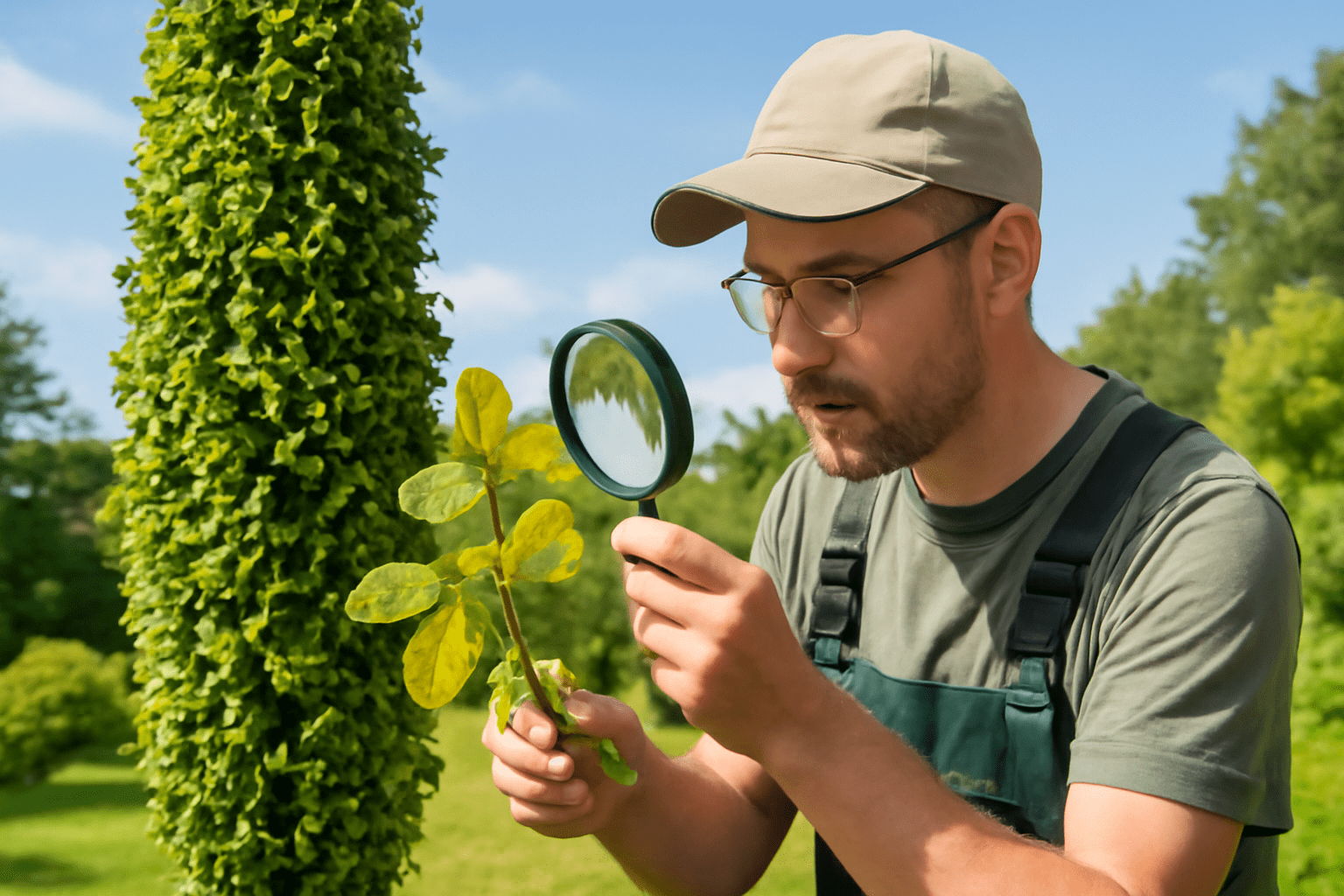
2. Pest Infestations 
Beech trees, though generally resilient, can fall prey to pests like aphids, scale insects, and beech leaf miner larvae. These pests can cause significant damage if not controlled.
Solution:
- Regular Inspections: Keep an eye out for signs of pests, such as sticky sap (from aphids) or discolored patches on leaves.
- Natural Remedies: Spray with a mixture of water and mild soap to remove pests. For severe infestations, consider using neem oil or insecticidal soap.
3. Canker Diseases 
Beech trees are vulnerable to certain fungal diseases, like beech bark disease, which can cause sunken, discolored spots on the bark.
Solution:
- Prune Infected Areas: Remove and destroy any infected branches.
- Avoid Wounding: Be careful not to injure the bark during maintenance or pruning, as these wounds can invite infection.
4. Poor Growth or Stunted Tree Development 
If your columnar beech tree isn’t growing as expected, it could be due to insufficient sunlight, poor soil, or incorrect planting depth.
Solution:
- Right Planting Location: Ensure your tree is planted in a sunny spot with well-draining soil. Beech trees prefer full sun to partial shade.
- Correct Planting Depth: When planting, make sure the root ball is level with the ground surface. Planting too deep can stunt growth and lead to root rot.
5. Wilted or Brown Leaves 
Drought stress or root damage can cause the leaves to curl, turn brown, and eventually fall off.
Solution:
- Regular Watering: Ensure your beech tree gets consistent water, especially during dry spells. However, avoid overwatering, as this can lead to root rot.
- Mulch Around Base: Apply a layer of mulch to retain moisture and regulate soil temperature.
6. Root Rot 
Root rot is often caused by excessive moisture in the soil or poor drainage, leading to the roots becoming infected with fungi.
Solution:
- Improve Drainage: Make sure the soil around the tree drains well. If needed, amend the soil with organic matter to improve aeration.
- Avoid Overwatering: Water only when the top 2-3 inches of soil are dry to the touch.
By understanding these common problems and their solutions, you can ensure your columnar beech tree stays healthy and beautiful for years to come.
With a little attention, your beech tree will thrive and enhance your garden with its graceful, columnar form!
Conclusion
The Columnar Beech Tree is an exceptional addition to any garden, offering beauty, elegance, and versatility with its narrow, upright form and vibrant foliage. With the right care, including proper planting, pruning, and regular maintenance, this tree can thrive for years, becoming a stunning feature in your landscape.
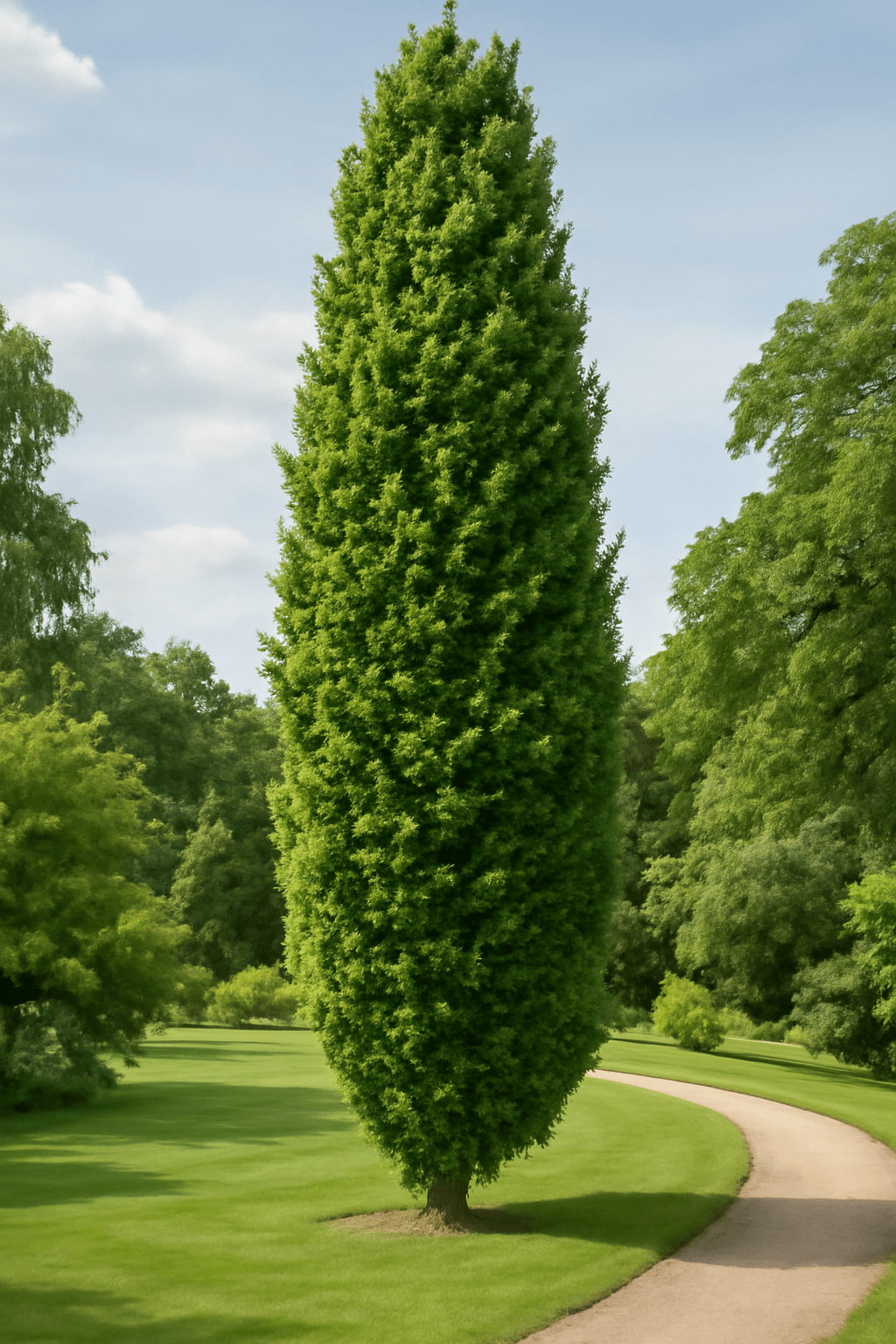
By following the expert tips in this guide, you’ll have everything you need to plant, grow, and maintain your Columnar Beech Tree successfully. Whether you’re a beginner or an experienced gardener, the Columnar Beech Tree is a low-maintenance choice that will provide long-lasting beauty and structure to your outdoor space.
Start caring for your Columnar Beech Tree today, and watch it grow into a breathtaking, vertical beauty for your garden!
Frequently Asked Questions(FAQ)
How tall does a Columnar Beech Tree grow?
The Columnar Beech Tree typically reaches a height of 20–30 feet and spreads 10–12 feet wide at maturity. Its narrow, upright shape makes it ideal for smaller spaces and urban gardens.
How fast does a Columnar Beech Tree grow?
Columnar Beech Trees grow slowly, typically adding 6 to 12 inches in height per year under ideal conditions. Patience is key, but with proper care, it will gradually reach its full size.
What soil is best for a Columnar Beech Tree?
Columnar Beech Trees thrive in slightly acidic, well-draining soil (pH 5.5–6.5). If your soil is too heavy or alkaline, amend it with organic matter like compost to improve drainage and nutrient content.
When is the best time to plant a Columnar Beech Tree?
The best time to plant a Columnar Beech Tree is in early spring or fall, avoiding extreme summer heat and winter frost. These seasons allow the tree to establish roots before harsh weather conditions.
Can a Columnar Beech Tree tolerate drought?
While Columnar Beech Trees prefer consistently moist soil, they are somewhat drought-tolerant once established. However, during dry spells, it’s important to water deeply to ensure healthy growth.
How do I prune a Columnar Beech Tree?
Prune your Columnar Beech Tree in late winter or early spring before new growth appears. Focus on removing any dead, damaged, or diseased branches and lightly trim to maintain its upright, columnar shape
Does the Columnar Beech Tree require a lot of maintenance?
Columnar Beech Trees are relatively low-maintenance. They require occasional pruning, regular watering (especially during dry spells), and the occasional pest check to keep them healthy and attractive.
How do I protect my Columnar Beech Tree from winter damage?
To protect your Columnar Beech Tree in winter, mulch around the base to insulate the roots and reduce the risk of frost damage. Additionally, consider using burlap to shield young trees from cold winds or heavy snow.






